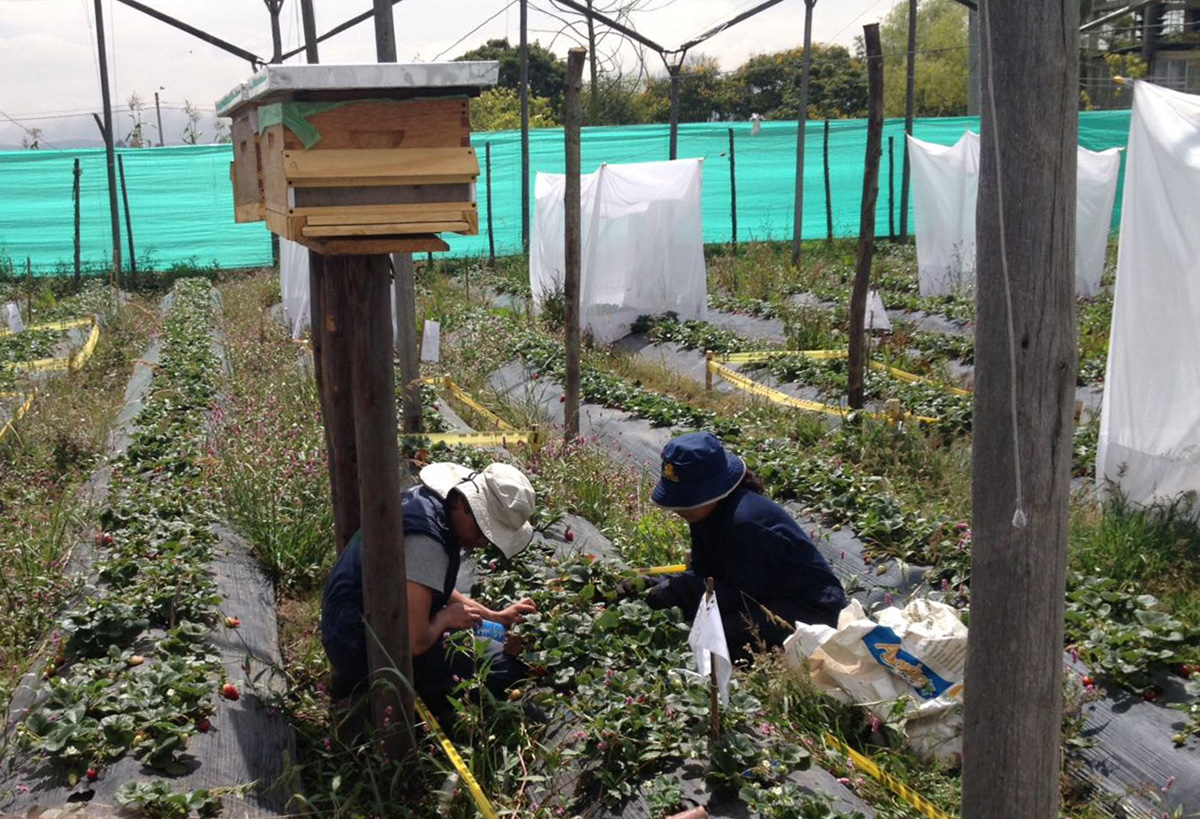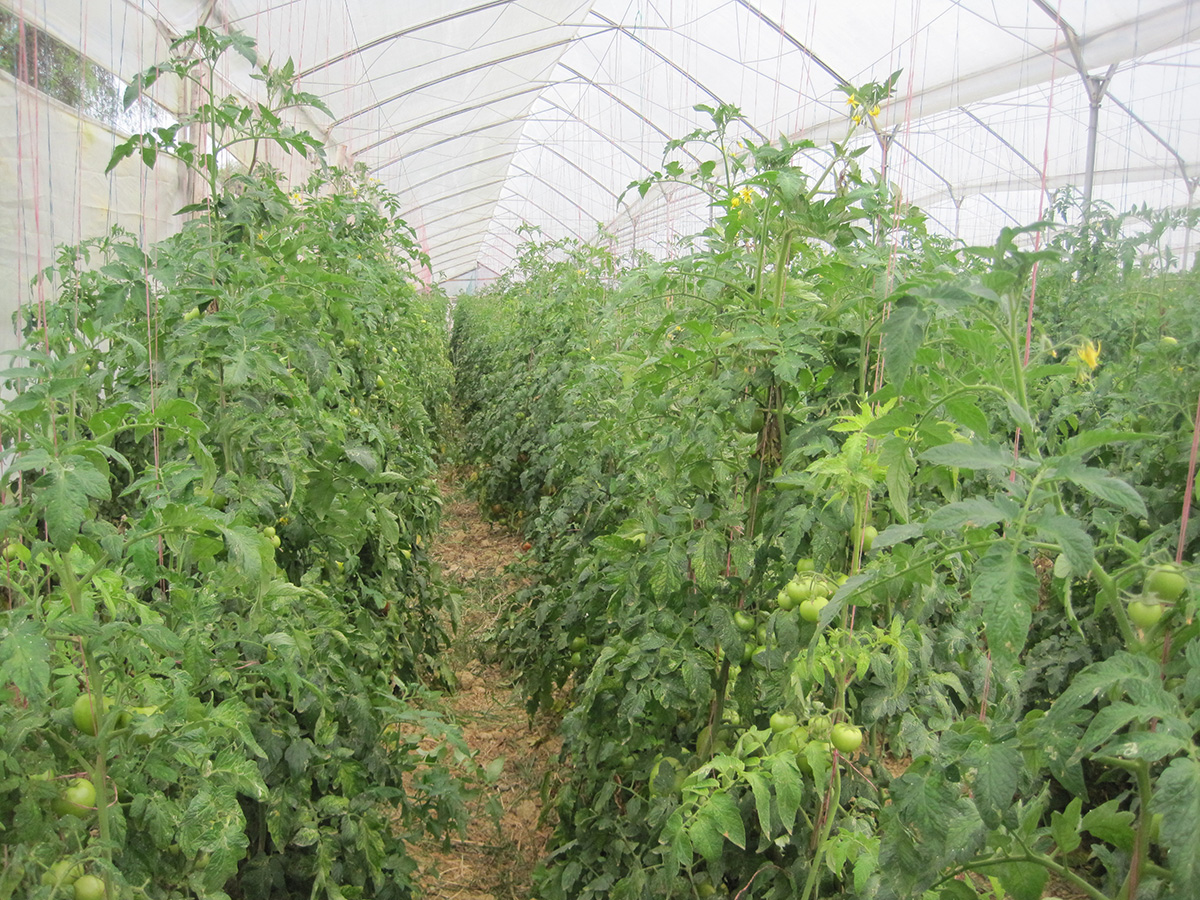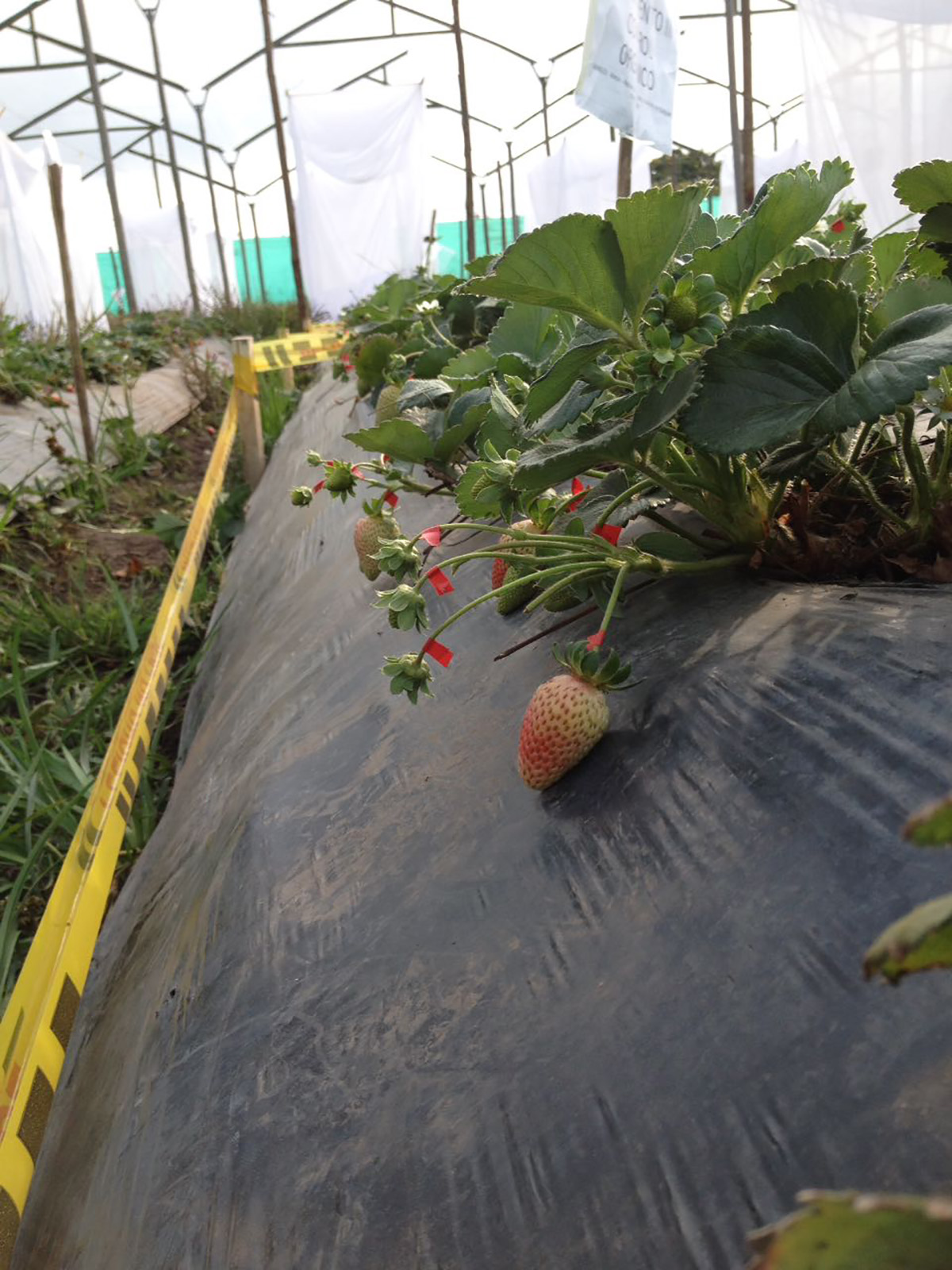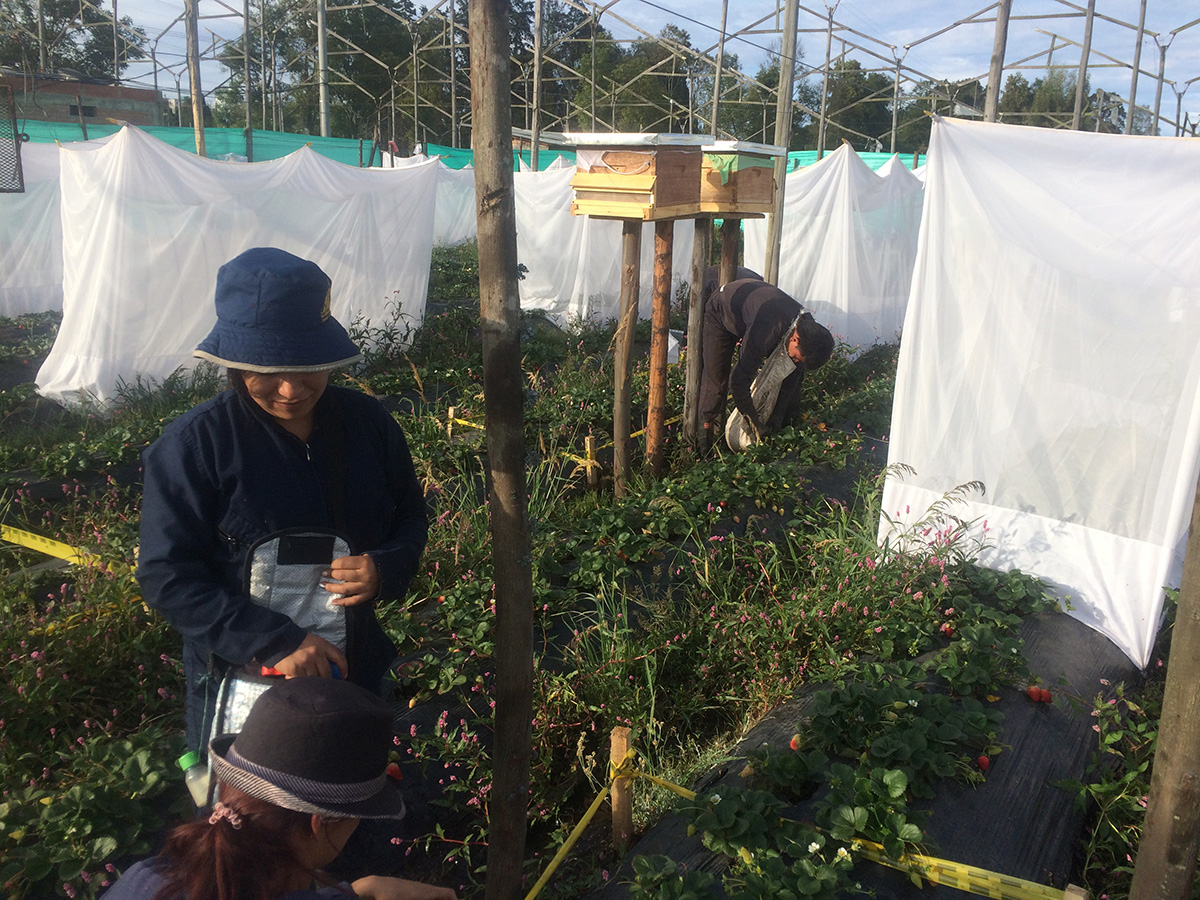When the active agent adheres to the hair on the body of bees, they transport and deposit the powder to flowers, ultimately controlling fungi and other pests.
The dispenser installed in strawberry crops in the municipalities of Sibaté, Guasca, and Mosquera, was developed by Canadian Professor Peter Kevan, who was recently invited to the Universidad Nacional de Colombia (UNal) to teach a specialization seminar.
Since 2014 the UNal-Bogotá Apiarian Products Science and Technology Research Group began this research project thanks to support from the Bogotá and Cundinamarca Agroindustrial Technological Corridor.
Although it has been demonstrated that bumblebees are much more effective in greenhouse crops, in Colombia beekeepers only work with bees. However UNal in association with the Universidad Militar is looking into the possibility of using native species and bumblebees to maximize the process.
Furthermore, the work with strawberries developed along with the National Apprenticeship Service (SENA, for its Spanish acronym) in the municipality of Mosquera has also carried out tests in real conditions for organic, hydroponic and conventional crops.
The aforementioned research group comprised of an UNal agronomist and two zootechnicians and two SENA natural resources management technicians is working with several associations and country folk with the purpose of performing tests in areas no larger than half a hectare (1.2 acres).
"We began to work with strawberries because the Province of Cundinamarca will begin to export the fruit and obviously needs to have very low toxicity levels," said Professor Judith Figueroa Ramírez, head of the research group.
Bees also are known in this case as entomovectors and are a tool which has proven to be very effective in reducing the use of toxic compounds during the previous stage before delivering strawberries to international markets.
"Right now we are working to control a fungus (Botrytis cinerea) which infects the fruits from the initial stages of development but can also infect the whole crop," said Figueroa.
Thanks to her experience of more than ten years the research group they now have carried out a genetic selection to develop less aggressive individuals allowing for better and safer handling.
"The zootechnicians of the group performed artificial inseminations after selecting bees and drones with the purpose of obtaining new genetic lines which were initially distributed in the Provinces of Sucre, Magdalena, and Boyacá," said Figueroa.
Although in controlled circumstances they have demonstrated that effectively they can obtain better quality strawberries, they hope to develop genetic bee lines with specific affinities to certain crops such as coffee.
 Correo Electrónico
Correo Electrónico
 DNINFOA - SIA
DNINFOA - SIA
 Bibliotecas
Bibliotecas
 Convocatorias
Convocatorias
 Identidad UNAL
Identidad UNAL







